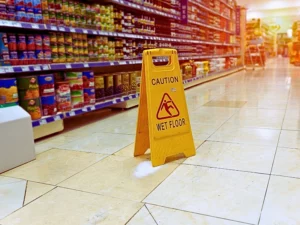Injured consumers may find it helpful to know how to sue a company for a faulty product to recover compensation for their losses. A faulty product poses a significant risk to your life and property. Consumers are protected by Nevada product liability laws. These laws ensure that whoever is liable for the product defect is held accountable, and the injured party receives compensation for his or her losses.
Types of Product Defects
Several forms of defects can result in a product liability lawsuit. They fit into the following categories:
Design Defects
Design defects occur during the conception process, long before the product gets to the manufacturing or assembly stage. The designer may have overlooked some measurements or possible design issues. In most cases, the designers are part of the manufacturing company, eliminating the need to sue them separately.
For example, a wrongly designed lawnmower has blades that come loose randomly or are too close to the operator’s feet for comfort. If the lawnmower injures the users, the company may be financially responsible for any resulting expenses.
Manufacturing Defects
Manufacturing defects usually occur in the first stages of production or assembly, making the products unsafe before they even reach the customers. If these errors cause injury or loss of property, the manufacturer bears all responsibility. Examples include the use of unsuitable materials, human errors, or wrong materials.
Lack of Warning / Unclear Instructions
Manufacturers or producers should warn the intended users to practice caution when using a possibly hazardous product. Further, the warnings should be sufficient and clear enough to protect the consumer from improper use, which would result in injury. The fact that there are scanty warnings on the product labels doesn’t mean they are sufficient to keep the consumers from injuring themselves.
An example would be cleaning products that produce toxic vapors or ammonia gas. If the label lacks instructions on putting on a gas mask before using the products and the consumer is harmed, he or she can sue the company for a faulty product.
Although manufacturers have insurance policies for their products, they may still bear liability for if their product was used correctly but still injured the user.
How to Sue a Company for a Faulty Product in Nevada?
In deciding whether to proceed with suing a company for faulty product, you may consider whether the fault for your injuries lie with the company or manufacturer. To determine this, you might take into account questions such as the following:
- Did the product have significant flaws that could potentially cause injuries?
- Were the imperfections present when the products left the stores of the manufacturer or the distributor?
- Did the imperfection bring injury or loss of property to the plaintiff?
If you answered all the questions in the affirmative, you have reasonable grounds to file a defective products lawsuit. The next step in how to sue a company for a faulty product is defining the type of liability.
Defining Liability

Nevada law recognizes three categories of liabilities. These include:
Negligence
Negligence liability places responsibility on everyone, from the manufacturer to the retailer. All of them have a duty to ensure the products they distribute are safe enough for the intended users. If they fail in their duty to exercise reasonable care to protect the consumer from defective products, they set themselves up for prosecution.
When suing for product liability or personal injury, gather enough evidence to support your claim. A product liability lawyer can help with the investigations to establish negligence.
Breach of Warranty
Manufacturers usually offer assurances, either directly or indirectly, that their products are adequate and safe for consumer use. Express warranties are usually spelled out in pamphlets, manuals, or other written materials that come with the products. Additionally, this type of warranty gets generous mentions in advertising materials and sales pitches.
The breach of warranty occurs when the product fails to live up to the stated adequacy or performance and potentially harms the consumers.
Even if no direct safety guarantees are given, the manufacturer has a duty to ensure the product lives up to specifications and doesn’t endanger the consumer unreasonably. This is called an implied warranty. You could recover damages if the defective product breached either express or implied warranties, causing loss of property or physical harm.
Strict Liability
Establishing strict liability is the easiest since there are no special conditions to consider. Under Nevada laws, manufacturers or assemblers are liable for damages or injuries inflicted on the consumers or their properties by a faulty product. To recover compensation, you must show that the product was defective, the defect was present during the distribution process, you used the product correctly, and the product caused injuries or damages.
Once you establish liability and collect enough evidence, you may file a defective products lawsuit against the liable parties in accordance with the statute of limitations. Under Nevada laws, you have two years from the date of the injury or wrongful death to file your claim.
How to File a Product Liability Lawsuit
To initiate a lawsuit, you will need to collect enough evidence. You must also know who to sue and bring a product liability lawyer on board. Failure to do any of that will waste your effort, time, and money since the claim may be unsuccessful. Suppose you and the passengers suffered injuries from faulty car products, like defective car seats. You need the following proofs:
Proof of Injury
You must have enough documentation that you suffered physical harm as a result of using the defective product. Proving a product is defective without proof of injuries isn’t enough to support a personal injury claim. Being in possession of a dangerous product is inadequate.
You need a doctor’s report, pharmaceutical prescriptions, medical bill receipts, and other documentation showing you got medical attention. Documentation and medical records are important in building a strong case.
Proof of Defect
Your evidence will need to show the product had flaws that could potentially cause physical harm to the intended users. Further, you will prove the manufacturers overlooked some design flaw or failed to label the products correctly.
Cause and Effect
After proving your injuries and showing the product was faulty, you must provide a vital link between the two. How did the defect contribute to the injury or loss of property? If, for instance, a phone exploded and severed your fingers, you need to show how that is the manufacturer, assembler, or distributor’s fault.
Proof of Correct Use
Lastly, you should provide evidence absolving yourself of the blame, since the manufacturers sometimes shift the blame to consumers. The jury needs undisputable evidence that you used the product as directed when you suffered the injuries. Show that you followed every step or diluted the product as directed.
Liable Parties in a Faulty Product Lawsuit
You may be able to include the following at-fault parties in your lawsuit:
Manufacturer
The company is undoubtedly the first to bear responsibility for a faulty product unless proven otherwise. This is because it has a duty to shield the intended customers from harm or loss of property caused by its faulty products. Whether cheap materials, confusing user instruction, or lack of research is to blame, the manufacturer is still at fault.
Sometimes, you can sue the employees individually if they acted out of their employment terms and let faulty products pass.
Wholesalers and Retailers
Retailers can equally carry the blame if the product they sell ends up harming the customers. The management is supposed to do due diligence on the safety of products before selling them. If a retailer fails to check that some equipment is functioning correctly, your lawyer can sue them for negligence.
An example is defective knee replacements that end up crippling the users instead of boosting the movement of the patient. The retailers should have checked the product safety before supplying the medical equipment.
Anyone Else in the Design, Manufacturing, and Distribution Chain
Anyone who played a role in designing, creating, transporting, or selling a defective product may be able to be held liable for victims’ injuries.
Mass Tort Lawsuits
A product liability lawsuit can also become a mass tort lawsuit if the victims decide to sue the company jointly. A mass tort case pits the company against a group of individuals who used the product and suffered harm. Torts fall into three broad categories, namely:
Intentional Torts
Intentional torts show that the at-fault party, including the company, distributors, and advertisers, released the faulty product intending to harm the user.
Negligent Torts
These show negligence, for instance, when the company failed to check the final product for safety before selling to distributors.
Strict Liability Torts
This type of tort doesn’t consider the degree of care used by the manufacturer. It generally holds anyone responsible if their actions cause harm.
Knowing how to sue a company for a faulty product may help you recover the compensation you need to pay for your medical bills, lost wages, and pain and suffering.




